RED76
Editor: Sam Gould & Co.
Date: 2000 - 2015
SERIES NARRATIVE
Co-founded by Sam Gould and Jef Drawbaugh and ideologically centered within Pacific Northwest America, Red76 was established in January of 2000 in the Portland, Oregon. Forming at the tail-end of the Clinton era and coming into its own at the height of the Bush presidency, much of the groups work found itself in conversation with the confusion, rancor, deceit, and overall shenanigans of this (now seemingly simpler) time-period.
Red76 projects worked towards creating publics through the manifestation of ad-hoc educational structures and discursive, expanded media forms. Often situated in what is called “public space” - such as street corners, laundromats, taverns, et al - the pedagogy of their construction was meant to call into question the relationships, codes, and hierarchies embedded within these social landscapes. Red76 initiatives often utilized overlooked histories and common shared occurrences as a means of creating a framework in which to construct their public inquiries. Social histories, collaborative research, parallel politics, free media, alternative educational constructs, gatherings, masking, and public dialogue play a continuing and vital role within the methodology and concepts of Red76's work.
Along with producing many independent initiatives, Gould and Red76 engaged in projects commissioned by the Institute of Contemporary Art, Philadelphia; the Drawing Center; the Yerba Buena Center for the Arts; the Lower Manhattan Cultural Council; Printed Matter; Creative Time; the Douglas F. Cooley Memorial Gallery at Reed College; 01 San Jose; SF MoMA; Rhizome/New Museum; The Bureau for Open Culture; Manifesta 8; The Walker Arts Center; the Smart Museum at the University of Chicago; the Department of Education and Cultural Affairs of the US State Department, and many others.
COMMENTARY
Red76 is a Jam Band.
Interview with Sam Gould
by Courtney Dailey and Nicole Cromartie
12/8/2009
*Begun in January of 2000 in Portland, Oregon, Red76 is the moniker for initiatives most often conceived by Sam Gould, and collaboratively realized with the assistance of Zefrey Throwell, Gabriel Mindel-Saloman, Dan S. Wang, Mike Wolf, Laura Baldwin, and many others. The line up of Red76 is always in flux and members come together depending on the particularities of the project: its location, budgets, and concerns. The group has initiated projects, large and small, that have been realized at the ICA (Philadelphia); The Soap Factory (Minneapolis); The Kitchen, The Drawing Center, 16 Beaver (New York City); in a variety of venues throughout Portland, Oregon (the home of Gould and other Red76 members); and at sites across the US and abroad.
In general, Red76’s central concern is to come to terms with the world; their projects aim to redefine those terms, to imagine “what would happen if….” They take on the language of manifestos to make sweeping gestures in favor of the temporary, itinerant, ad-hoc, fluid, generative, democratic. Historical models often serve as points of departure or structures within which Red76 facilitate discussion, thought, and action within public space. The wish to charge space and create an atmosphere wherein the public may become highly aware of their immediate surroundings, and their day-to-day activities, is a recurring element within many of the group's activities.
For Under these Conditions, we are interested in their most recent project, Flying University (2009), as its premise is to see educational environments everywhere: on planes, at speakeasies, in parks, over kitchen tables, in malls, and to see all people as learners and teachers. Working from the belief that there is an excess of ideas, non-hierarchical and improvisational frameworks are developed and employed by participants (initiated by Red76) to recoup, reuse, revise, and activate ideas rather than discarding them. With methodical attention to the small gestures that create the big structures, Flying University programs include the Pop-Up Book Academy; Suitcase Academy; Levine’s Market and Meetinghouse; Surplus Seminar; Anywhere/Anyplace Academy; School of the Unconscious; TMFCo (Teach a Man to Fish Company); Youtube School for Social Politics; and more that will undoubtedly emerge over time.
In the late 1990s, a number of collective projects, many stemming from participants' previous experiences of activism and art practice, came into being. Red76 (Portland), along with Temporary Services (Chicago), 16Beaver (New York), Just Seeds (Chicago), Instant Coffee (Toronto), The Yes Men (Pittsburgh), and the Pink Bloque (Chicago) all emerged at this time in the United States. *
CD: Do you have a sense of why all of these collective, socially-engaged projects seemed to begin around the same time?
SG: I do actually. It’s all 1998 to 2001, it was that three year period where people really started working. I think it’s a mix of political apathy and the economy from that time period. You’re at the tail end of all the bullshit with Clinton and Lewinski and how utterly horrible that was and people’s general reactions to that situation. Then, that situation lead to allowing Bush to get into office and then everything that happened after that with 9/11 and the lead up to going into Iraq. In 2000, in areas of the United States, there was a really bad economic downturn and people were having to find new ways to just get by and that included making their work. It dematerialized a lot of people’s practices, including my own. I feel like those two factors played a huge role in galvanizing projects that are happening today and have been going on for well over a decade now.
CD: Those two things aren’t what I would specifically point to, but they are interesting to think about atmospherically. It’s like you feel a need for something…
SG: Oh yeah. For me, I don’t feel like those two aspects played a real major role of bringing up this type of practice of socially engaged work. By that I mean that I don’t think it’s people’s direct responses to that situation, it’s more an environmental shift. It’s people’s own unconscious reactions and you start to realize...everyone reacted in one way or another. There was a certain subset of people who reacted in a particular way.
CD: It was interesting to me too because it seemed that there was such a flowering of collective projects. It felt like that was the way to go and the thing to do. I would guess that a lot of similar activity came from political activism or some kind of hybrid DIY/punk adolescent experiences.
SG: Yeah, absolutely, for a lot of people interested in it, it wasn’t totally alien to them. For me, it made total sense coming from music. It’s just like being in a band.
CD: It’s like Red76 is a jam band.
SG: Yeah, pretty much. It’s a collective of people, of affinities. People get kind of confused, is it Sam or is it a larger group of people? That confusion always falls back to the music thing for me too. There’s one person who is the driving force for a band, but there are all these different people who have all these different skill sets who make the songs, the apparatus, whatever it turns into. It’s going to be different depending on who’s playing and who isn’t playing. I may be writing the songs but they’re going to sound different with different people adding their voice to the composition.
CD: Where’s the gig? Where’s the sesh? I like thinking of your work as sessions.
SG: Yeah, yeah, I think that’s very apt. It feels very natural for me to consider things in that way.
CD: Who do you do these projects for?
SG: I think that anyone has to accept that, largely, you’re speaking to your peers with your work. That’s going to be your dominant audience at any time, within any sort of aesthetic practice. It’s a natural inclination to speak to what, or who, you know. I wouldn’t say that that is the goal though, that’s not what I, or anyone that I collaborate with, are particularly trying to do. As much as possible, the goal is to expand outside that ring of familiarity. I think with that in mind, we realize that a lot of the public manifestations of this work - and by public I mean a specific public group interaction - is going to draw, generally, a group of people like the people organizing it, ideologically speaking.
CD: Is that "public group interaction" the work? Who's involved?
SG: I think a lot of people see socially engaged practices as the group dynamics and the social interaction that happens around them. For me that’s not the work, that’s one aspect of the work. What you try to do to create more of an anarchic pathway toward the audience is to have as many different means of engagement as possible, social engagement being only one pathway. With that in mind the work becomes narrative. The work becomes an idea. That idea of the work: the premise, that is the project. Then it is manifested through all of these different outlets. A lot of the time, they are these social interactions, these group dynamics, but often to just as large an extent, the work exists in various forms of media: leaflets, newspapers or stuff online. It’s equally as much about third party dynamics, what people are saying about things, in gossip or myths or whatever you want to call it. That’s equally important and that’s part of the work, it’s conjecture as media. All these things make the audience and with that in mind, it becomes really anarchic, out of the foreseeable control of the artist. It really broadens the scope of who you are interacting with.
CD: Although I think there are results of your work, your ideas, there seems to be a lack of interest in resolution. The way that I’ve thought about it in the past is: converge, consider, and disperse.
SG: Yeah, I think that’s apt.
CD: What is the reason behind avoiding some kind of statement or answer to the idea or the question that you pose?
SG: Well I think there are people who are far better suited for that than I am. But, far more importantly, that's just not who I am or what I want to do. I’m interested in all types of different ideas and concerns, though there are a lot of commonalities between many of them. If the work is about specifically looking at one problem, and trying to solve that problem, it would be really singular. My general DNA leans towards the pluralistic. I can’t help but think of too many different things at times. So, in this regard, rather than some form of social work, or political activism, I think the work tends to concern itself more with a fractured form of composition, more towards this very abstract form of writing. If we’re going to look at this work as being in line with those types of sociopolitical groupings, so called counterculture-type formations, and people trying specifically to get one problem solved or get something done, there’s always that subgroup which exists as the space for conjecture or the space for critical thinking within that set of concerns, or even a series of ephemerally linked concerns. These spaces aren't specifically about the problem. They exist to create spaces to be able to consider the problem.
CD: What kinds of spaces are these? What do they look like?
SG: They're found anywhere, from dominant educational institutions or the more radical, unsanctioned, offshoots of institutions, to really left-field free schools...whatever it may be. You also see such groups in less clearly defined frames, more singular, small group dynamics; salons, parties, basement punk shows, writers ad-hoc convergences or rock groups, etc. I feel like the work that we do falls more into that subset. It’s the space for engagement rather than specific action towards a goal. It's the space to formulate plans of engagement. It’s there to create a middle ground to consider whatever that topic may be.
CD: You set me up so nicely for my next question. With that in mind, creating a space for engagement or a space for critical thinking, how do you judge success with your projects?
SG: It depends from project to project. It’s not quantifiable and it never has been. There’s a certain group of people that are critical of that, but I’m not. I think that is because they see this area of practice as some sort of social organization or as some form of activism. I don’t see it that way at all, I see it as coming out of a tradition of politically conscious, critical aesthetics, pedagogy, and counter-culture platforms. It’s all a form of critiquing contemporary life. So how do you qualify success for a Dadaist play? You’re not really behooved to do so. You can say, "I enjoyed that." In this regard, the measure of success is skewed from what one might expect, and they often vary from practitioner to practitioner, participant to participant. For myself I tend to measure success through momentum and energy, which is hard to figure out, but you know. You don’t have any numbers but at the end of the day, or not even at the end of the day, sometime it's a month later, two years later, ten years later… In time you gain a palpable realization that something’s actually been happening. There is this momentum, and energy, that feels actualized. That’s something that I know and can say to be true in regard to the situation on the ground in terms of the work that I see - and how people talk and engage and consider - not only in this type of work but in the world in general. I think this type of work, whether someone is calling it art or something incredibly different, has had a lot to do with that shift in energy. Around the turn of the century, there was a real push of a lot of people creating situations that are very similar to the work that I feel that I am involved in and continues to go on today. Some of it is within the art world, some of it is not within the art world. I think it helps bring about a certain form of criticality to the public realm. I see that momentum, I feel like we're in a very different place now from where we were ten years ago. That’s successful to me.
CD: How do things like budgets, spaces, time frames contribute to your projects? I know that you've worked in a lot of different contexts...do you consider them constraints?
SG: I don’t see them as constraints. They are just frames to be able to consider the work within. They are really helpful for me, actually. Without them, it’s like, what do we do? Without knowing what those so-called limitations are, I find it very hard to work. Sure, it’s nice to have bigger budgets sometimes, but sometimes it’s totally not necessary. We’ve done work where we paid for it - bake sale style - and we've also done work where we've been given tens of thousands of dollars, you know, it all depends. The work doesn’t get done by what people are giving to us. That’s an aspect of it, of course. I’m here to make a living like anyone else. But at the same time I’m not going to do a project just because there’s a lot of money behind it. You do the work that makes sense.
CD: Are there projects that you’ve imagined but that you haven’t been able to do?
SG: Yeah, absolutely. I feel like what happens is that those unrealized projects get formulated into other projects and then portions of them get done. There are firmly written out ideas that I want to do that are pretty grandiose, that I haven’t been able to get done yet, but maybe one day. The Office of Parallel Journalism is an idea that Gabriel, Zefrey and I have been talking about for the last few years. It’s basically creating an AP service that is run by artists. So it is yet another lens for people to engage contemporary events. Much like you would have an AP photographer or writer on the scene of a police brutality situation, or Bloomberg giving a news conference, you would have some artist there, engaging that situation in their own way and having an outlet for that. We got as far as getting an NYPD press pass, but it petered out from there. We'll see where it leads.
DOCUMENTS
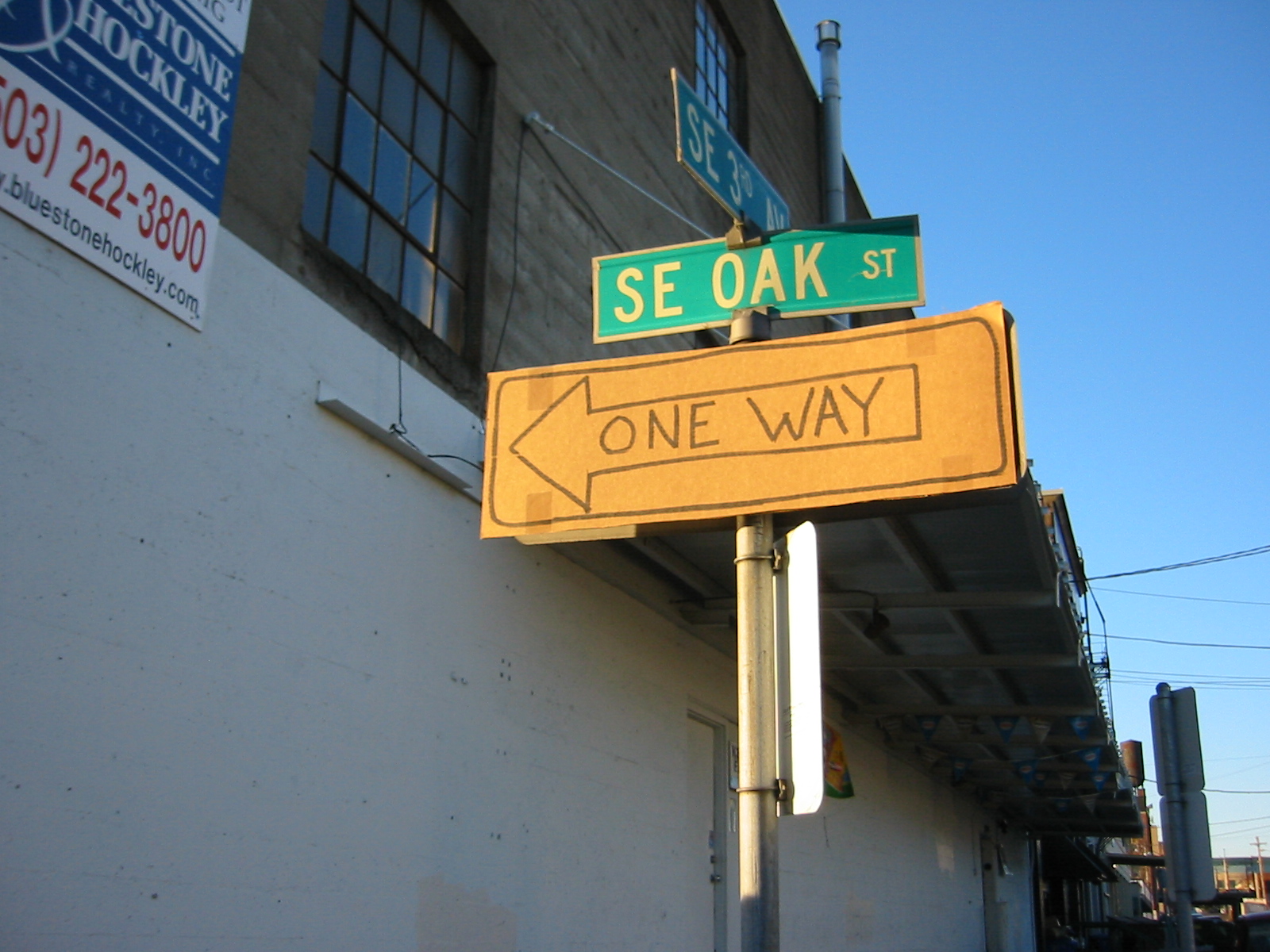

Hand-painted billboards outside of the Art of This Gallery in S. Minneapolis, MN during the 2008 Republican National Convention. When called, the toll-free number prompted the caller to finish the sentence, "Because of the War in Iraq I..."
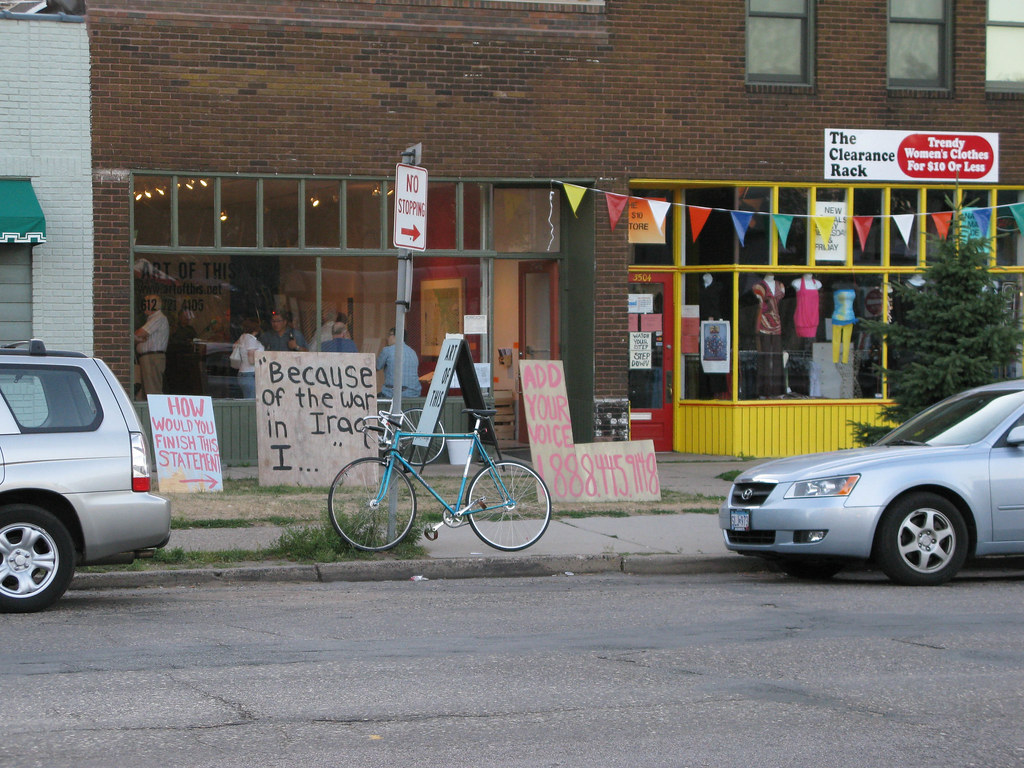

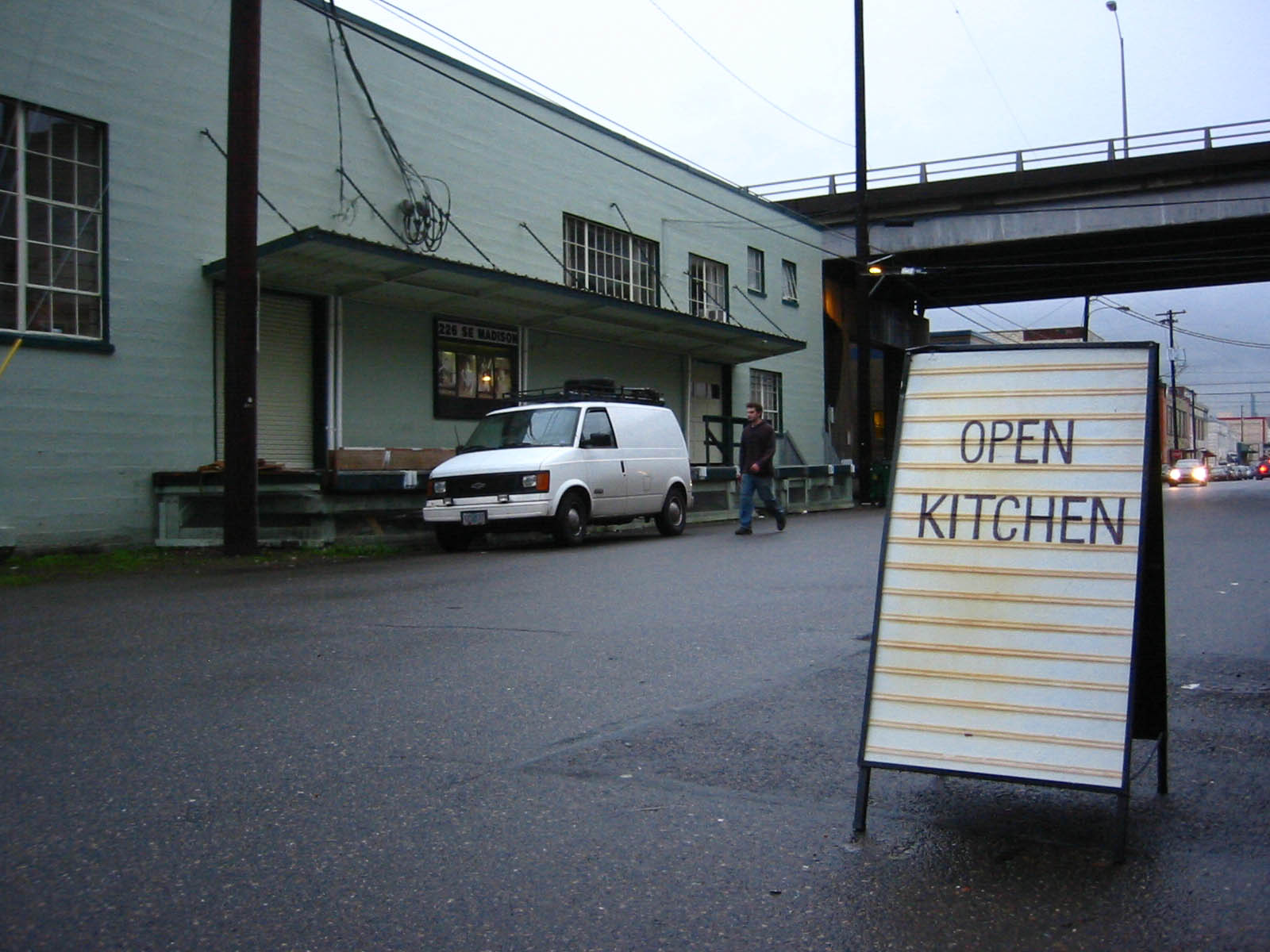

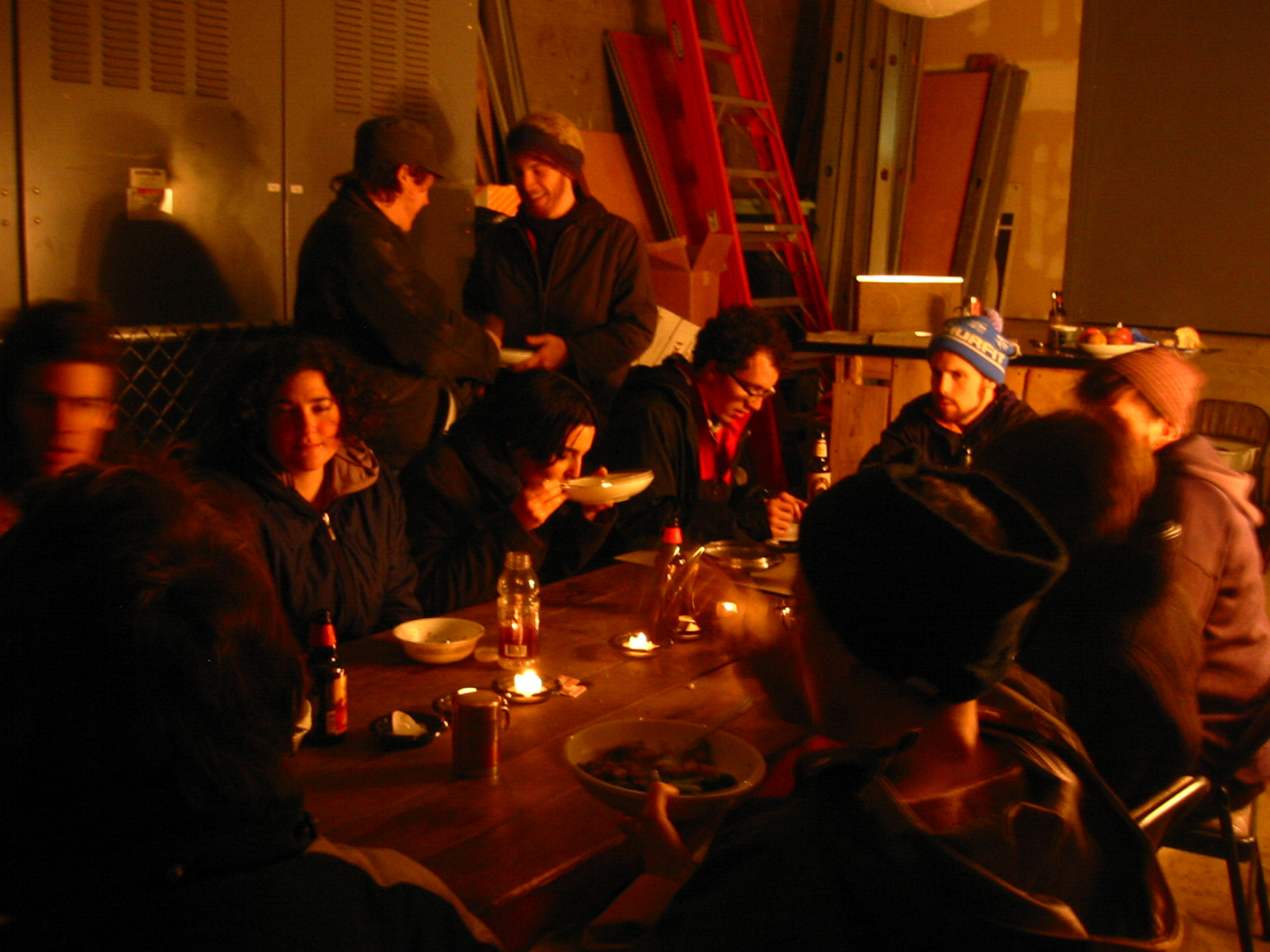

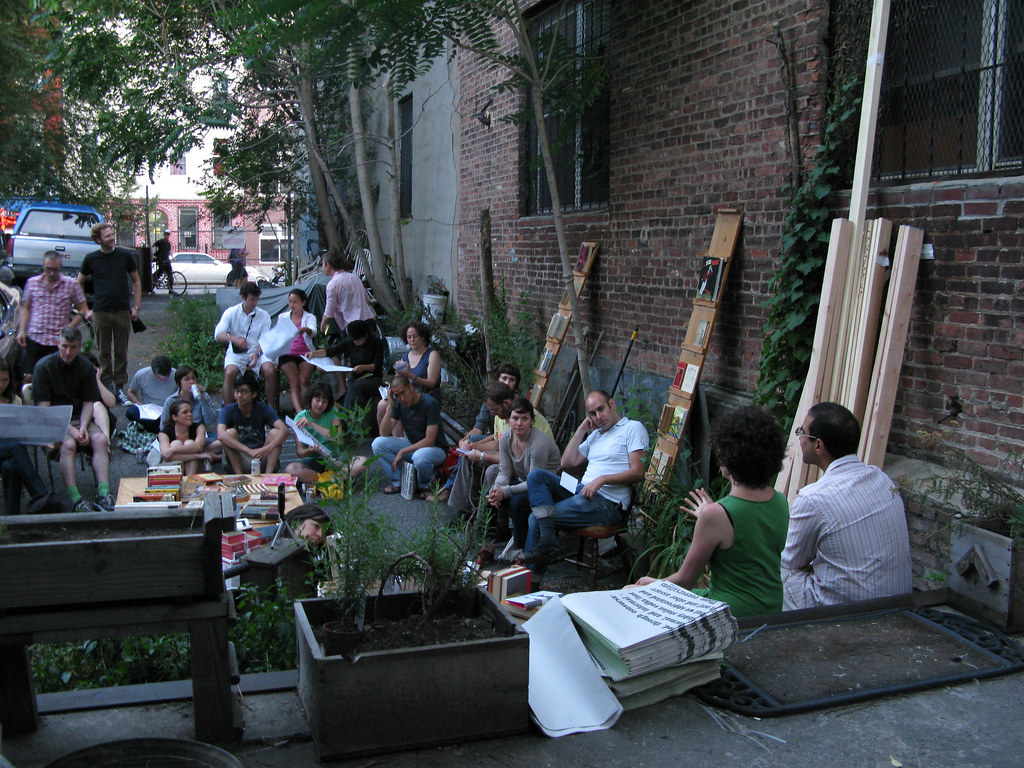

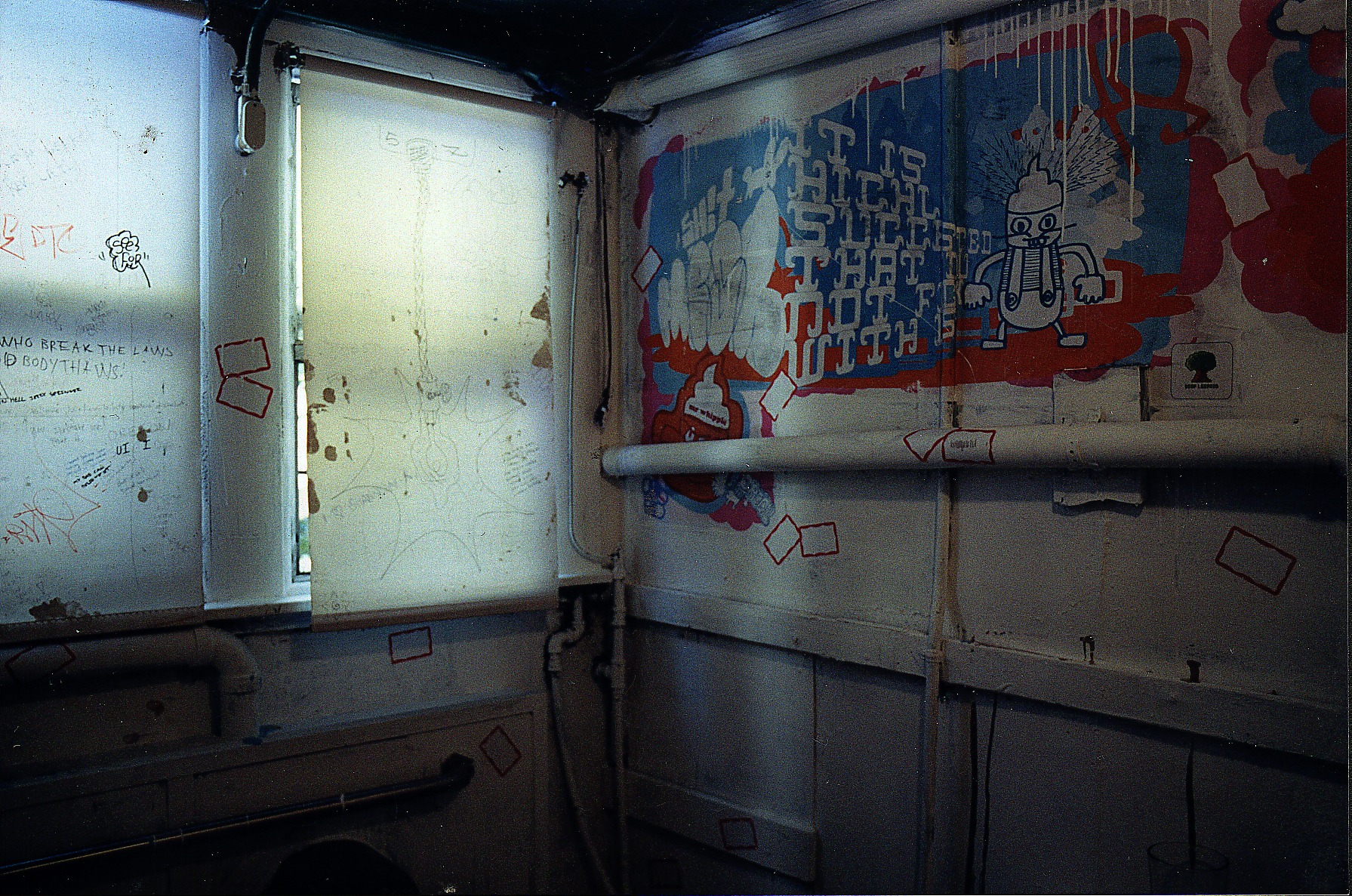

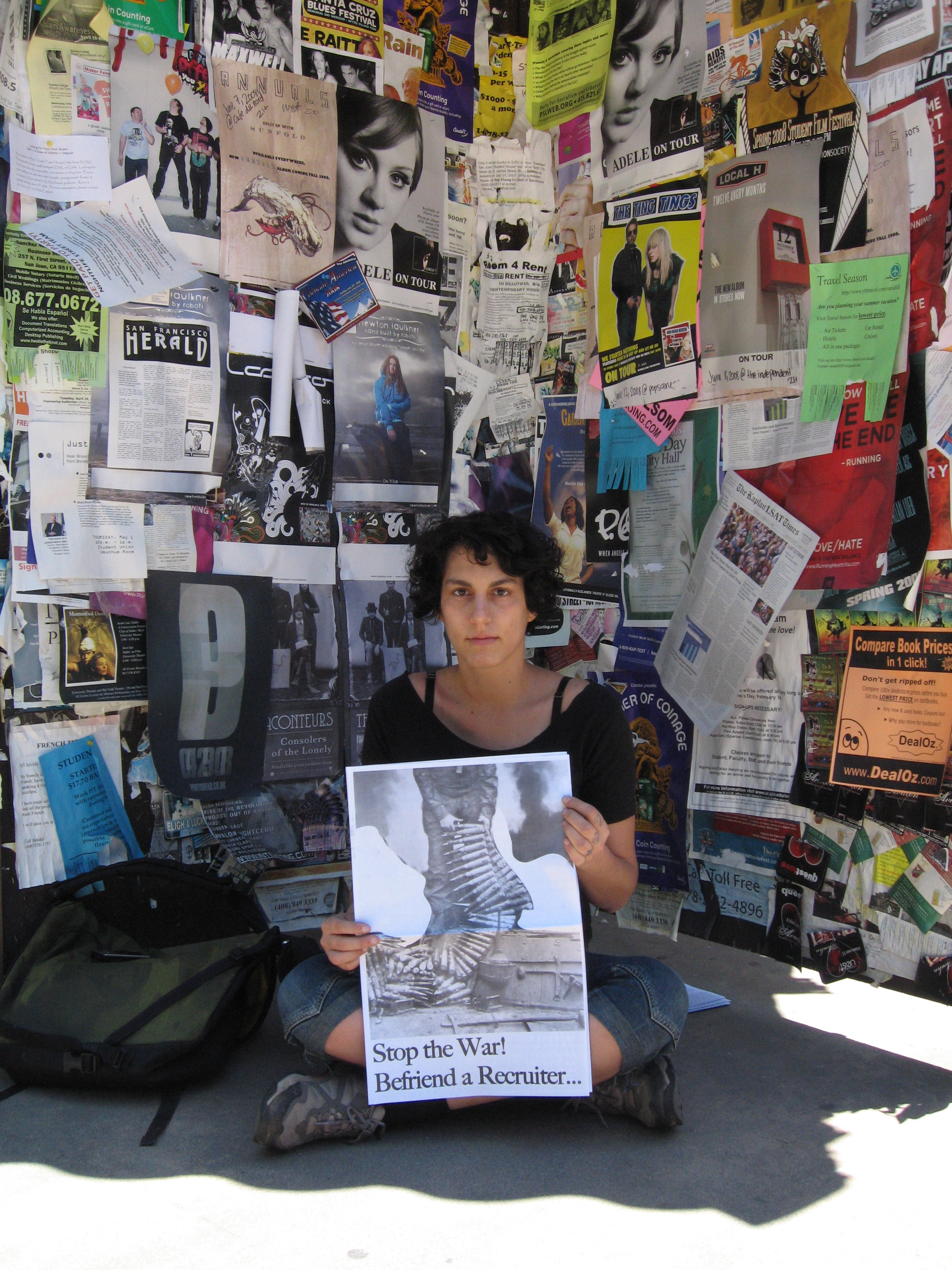

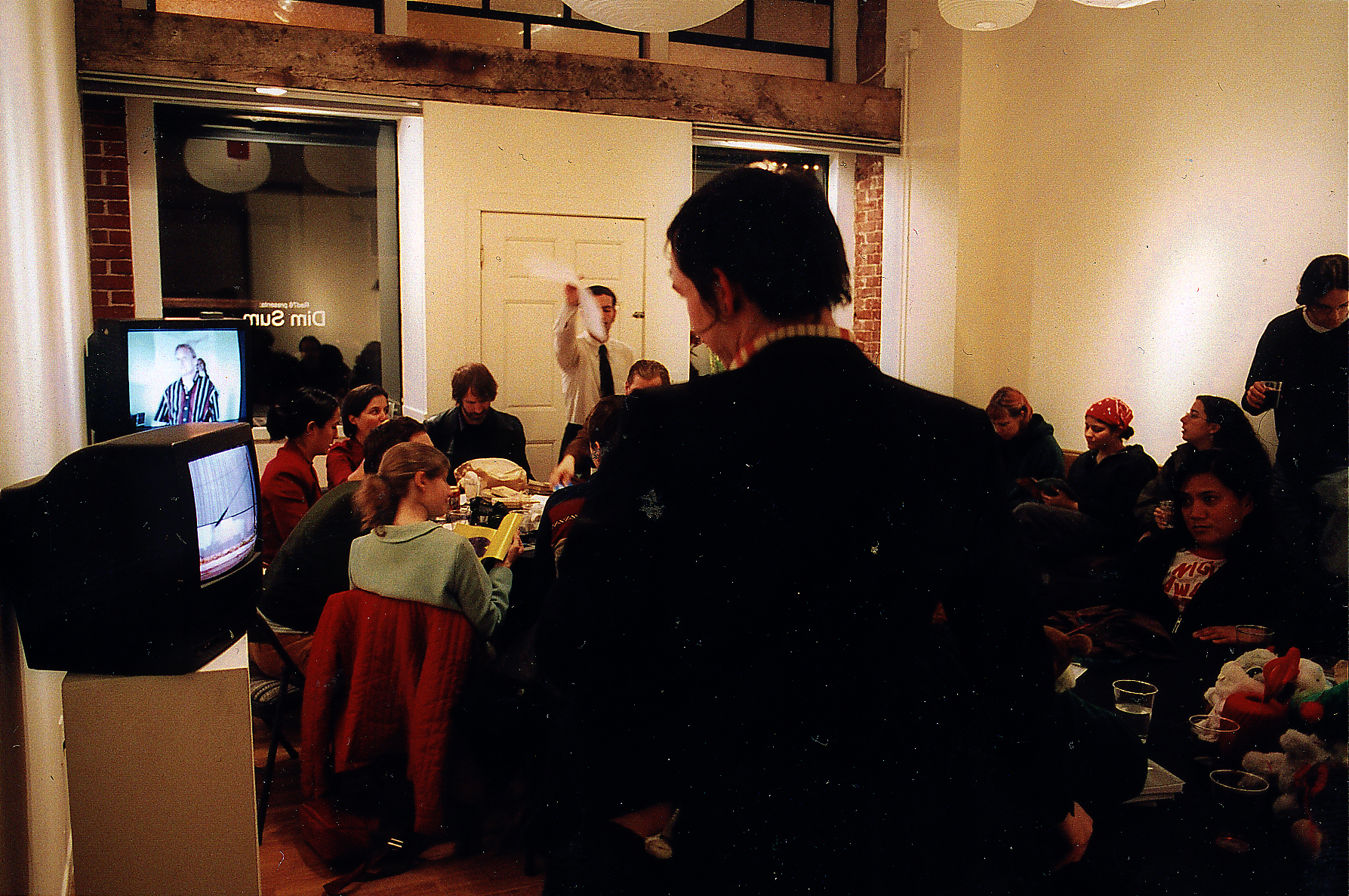

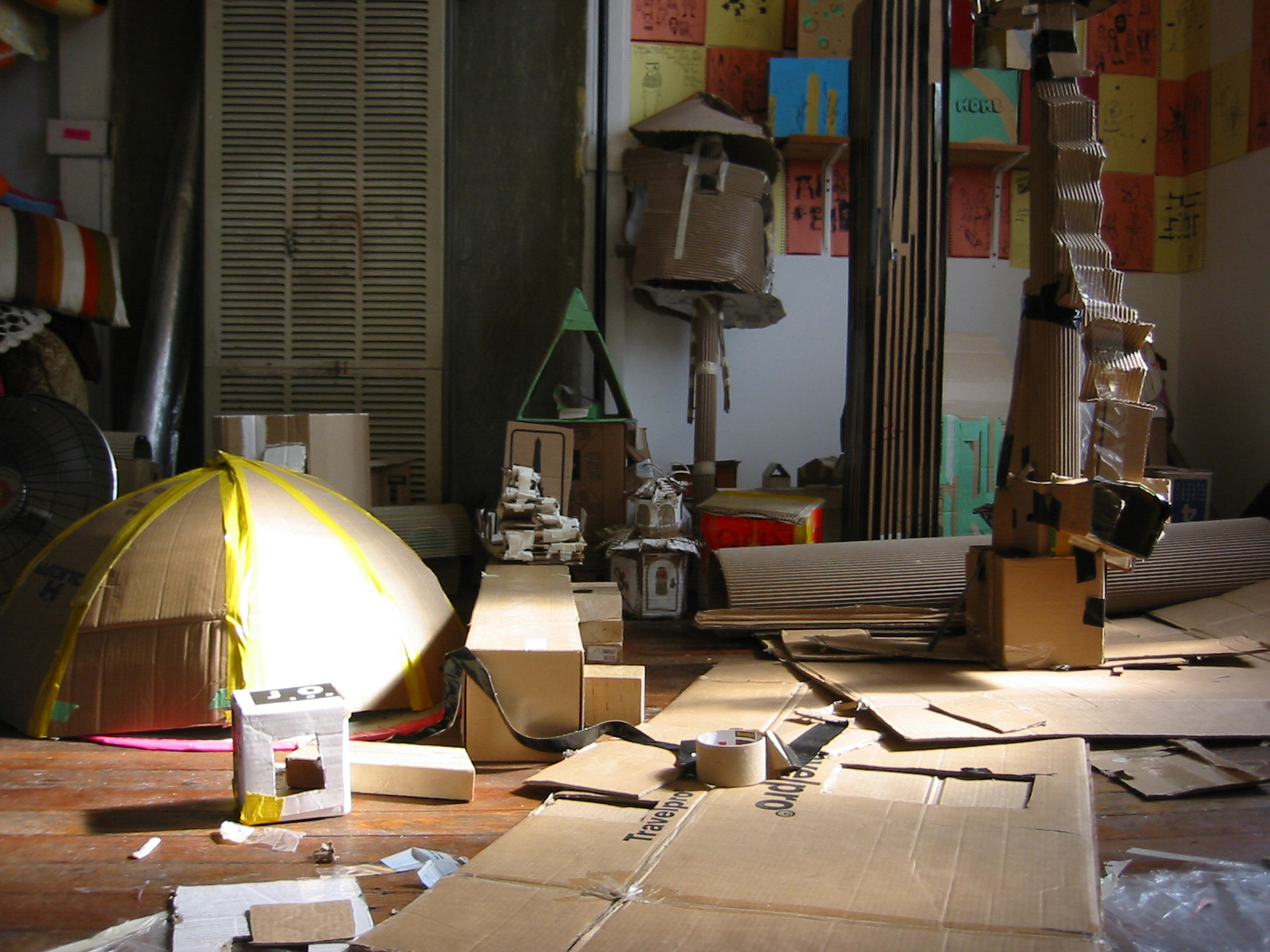

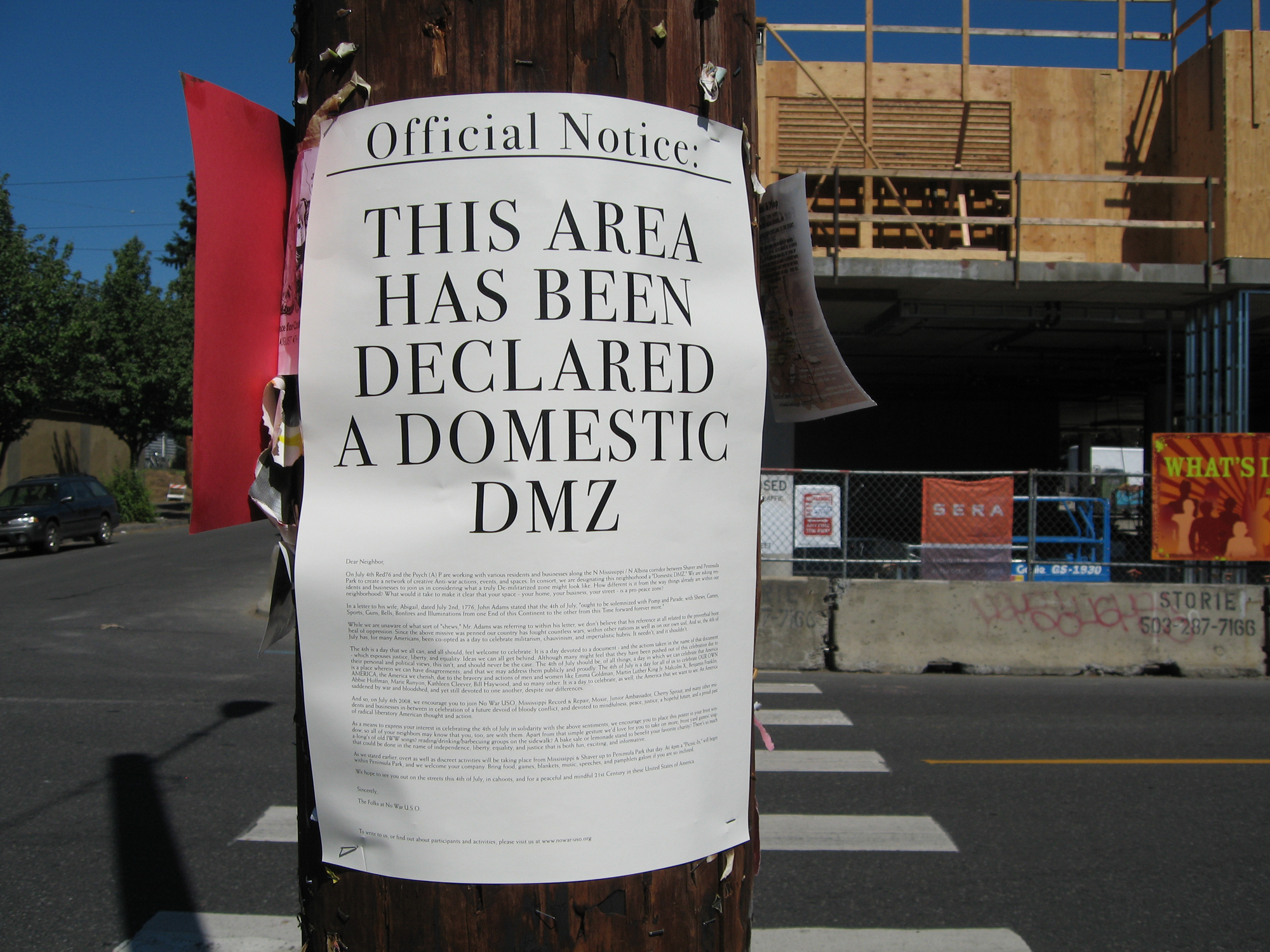
COLOPHON
Established by: Sam Gould & Jef Drawbaugh (2000)
Lead Instigator: Sam Gould (2000 - 2015)
Frequent Collaborators:
Gabriel Mindel Saloman / Dylan Gauthier / Dan S. Wang / Paige Saez / Zefrey Throwell / Mike Wolf / Ola Stahl / Courtney Dailey / Khris Soden / Matthew Yake and many unnamed others.